Jasmine Birtles
Your money-making expert. Financial journalist, TV and radio personality.

Growing your own fruit and vegetables is not only a great outdoor activity for you and your family. It also helps you avoid the genetic modification and chemical pesticides often used industrially.
You’ll also reduce your carbon footprint. Many of the fruits and vegetables available for purchase in supermarkets are imported and then shipped around the country.
In fact, by growing your own, you’ll actually be reversing your carbon footprint as your plants will be sucking up nasty carbon dioxide and producing a little bit of oxygen instead.
Growing your own also lets you choose exactly which varieties of fruits and veggies you want to eat. So you’re not limited to what the supermarkets choose to provide.
And you don’t need a massive garden to get growing. You can do a lot with a little space, even if it’s just a kitchen windowsill.
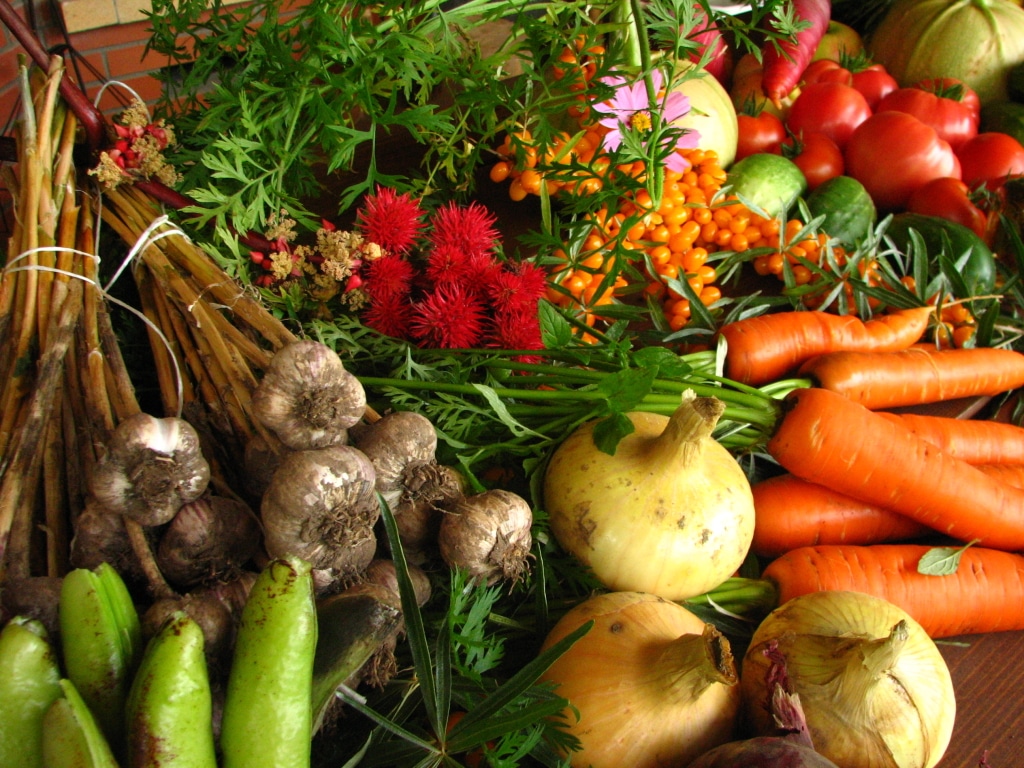 First, decide what you want to grow. Essentially you’ve got to pick the plants to go with your garden if you’re going to be successful.
First, decide what you want to grow. Essentially you’ve got to pick the plants to go with your garden if you’re going to be successful.
Consider:
If you’re a complete beginner, start small. Perhaps try tomatoes and potatoes, then work your way up to more exotic things like artichokes and asparagus.
Since scientific understanding of plants has advanced so much, lots of different varieties of vegetables have been created for specific conditions. Like growing on your windowsill, for instance.
If you’ve really got your heart set on growing something that perhaps doesn’t fit the space you’ve got, don’t give up. Varieties of aubergine have been bred to grow in a pot on your desk. You never know what you could get.
Ask at your local garden centre to find out if there’s a variety of the vegetable you want to grow that’ll fit your space.
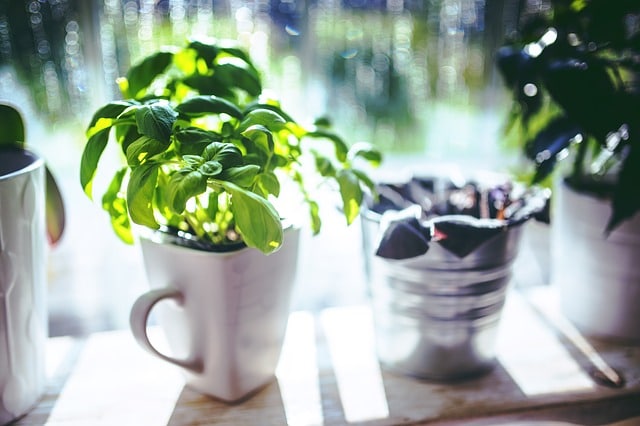 You can grow pretty much any vegetable in a pot on your windowsill with some good-quality multi-purpose compost.
You can grow pretty much any vegetable in a pot on your windowsill with some good-quality multi-purpose compost.
Although with limited space you can’t really grow the big leafy plants like Brussels sprouts, curly kale and red cabbage.
The only difference when growing in small receptacles is that the size of the vegetables you grow will probably be a bit smaller than average.
That said, your plant should have a higher overall yield and so even though you get smaller veggies, you’ll get more of them and they’ll be packed with flavour.
There are tons of favourites to be grown in your kitchen. Cucumbers, tomatoes, peppers, salad lettuces, cabbage, beetroot, spring onions and herbs will all flourish on a windowsill.
Because there are so many, we’ve picked three to help you choose.
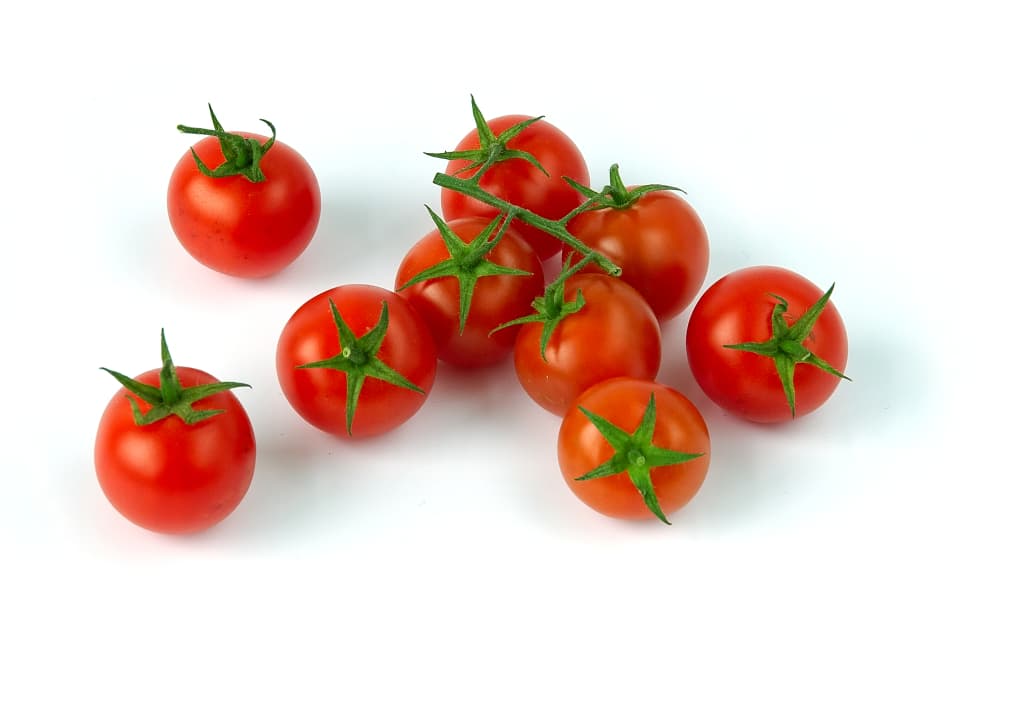 The orangey red perfect spheres that appear in the supermarket are so far from the real thing that in our opinion, we should all be growing our own. It’s so easy to grow them, you can’t really go wrong.
The orangey red perfect spheres that appear in the supermarket are so far from the real thing that in our opinion, we should all be growing our own. It’s so easy to grow them, you can’t really go wrong.
Tomatoes will grow anywhere. In a pot, a jar, even in an old tin can. The smaller the space they have, the smaller the tomatoes. But small tomatoes are great for pasta, salads and just popping into your mouth for a quick snack.
For growing in your kitchen, the bush variety of tomatoes is better. It’s more compact than the vine and takes less looking after. You have to grow seedlings before you plant them in the pot you’re eventually going to use. If you can’t be bothered, it’s easy peasy to buy the seedlings that have been grown and are ready to be planted in their final destination.
Once you’ve got your seedling, pop it in whatever it’s going to grow in with some rich John Innes compost (tomatoes are heavy feeders). Then all you’ve got to do is wait.
A 30cm pot should be enough space for three cherry tomato plants, so you can grow a fair amount on the window sill. Your plant will need lots of light, as much heat as possible and extra top-ups of fertiliser after it starts flowering (after two or three weeks). It’ll be thirsty, but be careful only to keep it damp and not water-log it. Once the tomatoes have gone red, pick them off straight away. Picking them will encourage more to grow.
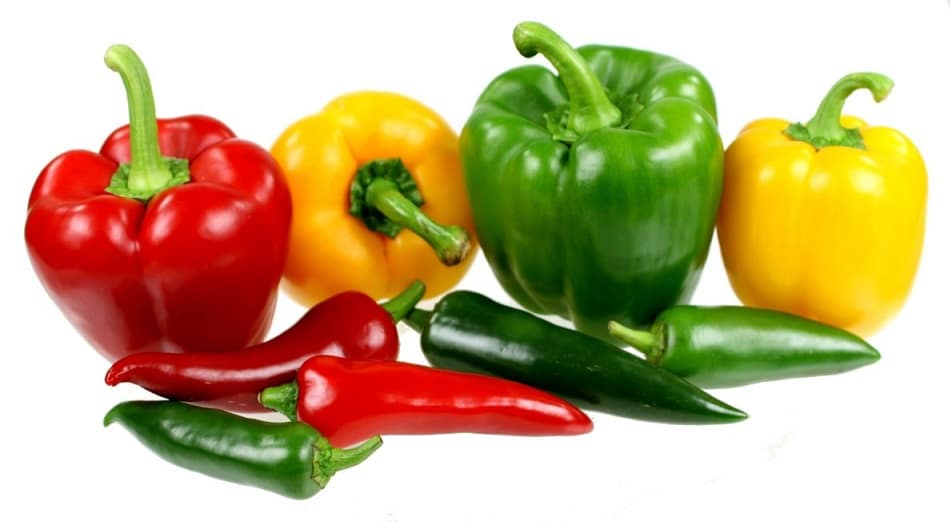 Growing chillis and peppers is very similar to growing tomatoes. You need to grow seedlings and then replant. Keep them in a warm and sunny place. They need to be fed and watered often and they’ll keep on growing new peppers and chillis when you pick mature ones off the plant.
Growing chillis and peppers is very similar to growing tomatoes. You need to grow seedlings and then replant. Keep them in a warm and sunny place. They need to be fed and watered often and they’ll keep on growing new peppers and chillis when you pick mature ones off the plant.
The great thing about them is the variety. Not only will it be fun to taste the ones you aren’t perhaps used to, but they can really brighten up your kitchen with colour.
Chillis and peppers are quite quick growers. As a result they can be big feeders so you’ll need to use soluble fertiliser. The same stuff as you use for tomatoes will do the trick. You also need to put them outdoors in warm weather when you can to help pollination of the flowers and ensure you’ll get a larger crop.
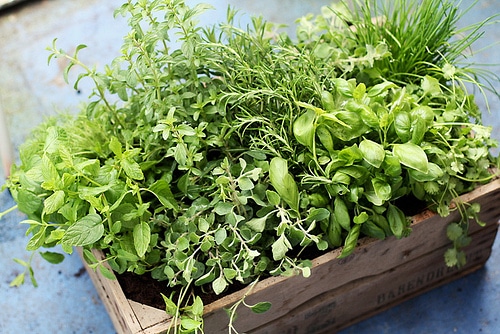 Herbs are great to grow on your windowsill where they’ll flourish in the sunshine – and also smell great. They’re easy to grow. At up to £1 for a tiny bag of fresh herbs at the supermarket, they’re sure to save you money.
Herbs are great to grow on your windowsill where they’ll flourish in the sunshine – and also smell great. They’re easy to grow. At up to £1 for a tiny bag of fresh herbs at the supermarket, they’re sure to save you money.
A bonus of growing herbs is also that in the wild, many of them grow in nooks and crannies of rocky terrains and so they’re not too fussy about the soil quality. Less work for you.
Saying this, you still need to have some pretty good-quality compost. Give them lots of sun and make sure they’re well drained. Some of the easiest herbs to grow are coriander, basil, oregano, sage and mint. All of these will infuse your cooking with tasty new flavours for a fraction of the price.
The increased amount of space offered by big pots that can fit on a balcony or a patio opens up lots more options. You can of course produce all the things that you can grow in a kitchen, just on a bigger scale.
If you’re growing outside, you have to be careful to bring in the indoor plants when it’s especially cold. Make sure they’re positioned in the sun during the day. Here’s a list of top three:
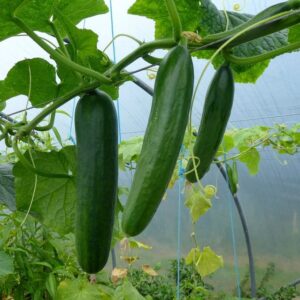 Ideally, cucumbers need indoor or greenhouse temperatures, but you can grow outside once the winter frosts have passed. They grow on a bush and on a vine, but both need to be staked and given room to spread out a bit. A bamboo stake will do the trick. It’ll cost less than £1 each.
Ideally, cucumbers need indoor or greenhouse temperatures, but you can grow outside once the winter frosts have passed. They grow on a bush and on a vine, but both need to be staked and given room to spread out a bit. A bamboo stake will do the trick. It’ll cost less than £1 each.
However, if you’re on a small patio or a balcony where you don’t want all of your space taken up by plants, you can train the plant to grow up and across one wall if you have a trellis or even just some chicken wire. Then the fruits will hang down across the wall whilst they’re growing and will look really nice.
Top tip: securely string a set of fairy lights on your wall like a trellis and train the plant to grow up that.
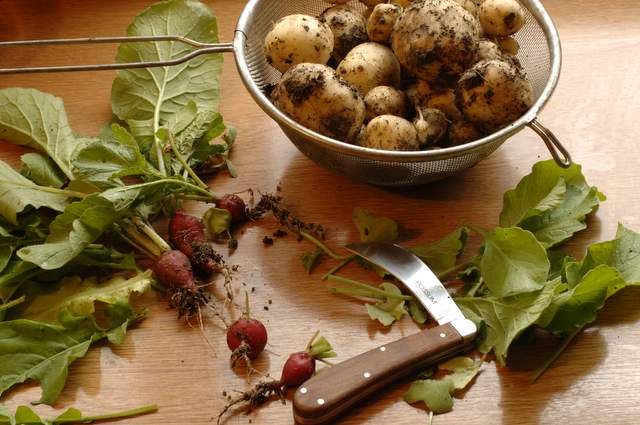 Supermarkets tend to stock potatoes that can be mashed, boiled, roasted and even fried. The varieties that are especially good for a certain use get lost behind the multi-purpose ones that have much less flavour.
Supermarkets tend to stock potatoes that can be mashed, boiled, roasted and even fried. The varieties that are especially good for a certain use get lost behind the multi-purpose ones that have much less flavour.
By growing your own, you can choose exactly what kind you want. Even if you’re just curious about the purple variety to see what purple mash looks and tastes like!
Like tomatoes, potatoes will grow pretty much anywhere. If you’re short on space, grow them in a pot or a bag full of compost. There’s no need for seeds. Got some old sprouting potatoes lying at the back of a cupboard? Dip your old potato in boiling water, make a cut in the compost bag half way down (to give the roots and the plant room) and shove it in.
For better results, use seed potatoes sold at garden centres or online. These are potatoes grown especially to produce plants and therefore are free of viruses. They should yield a good crop.
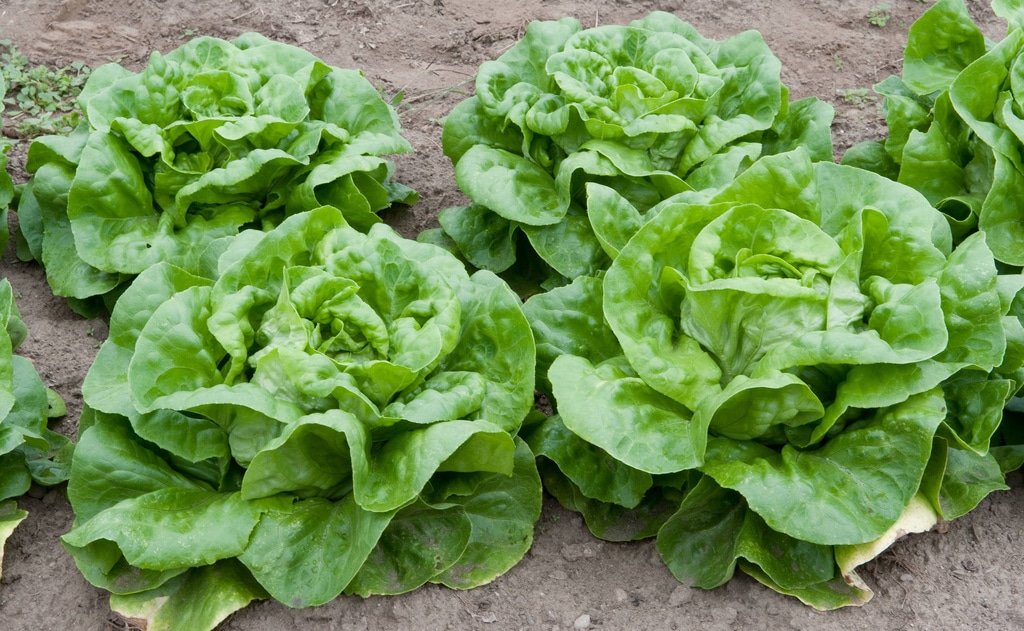 Lettuce leaves in a pre-packed bag are one of the most over-priced items in any supermarket. As soon as you open the bags, the gas that keeps the leaves fresh is released and they go off within a couple of days.
Lettuce leaves in a pre-packed bag are one of the most over-priced items in any supermarket. As soon as you open the bags, the gas that keeps the leaves fresh is released and they go off within a couple of days.
Growing your own lettuce is super-quick and easy. You can pick the leaves to have as much as you need, so none goes to waste.
Lettuces take up very little space. Growing them in a long tub on your patio or balcony is very easy.
There are two types of lettuce. Some form a heart, such as iceberg, others just grow leaves. Both need a nice rich compost that’ll retain moisture (to which you can also add chicken manure or blood, fish and bone fertiliser for better results) and a nice sunny spot to grow in.
You can buy lettuce seeds and grow the seedlings in a warm environment. Or get them ready to be planted and then sit back and wait for the leaves to be ready to eat. Heart lettuces will be ready once the heart (the middle bit) is firm to the touch and then they should be cut at the stem. Leafy varieties can be harvested in stages, taking the leaves from the outside as they get bigger.
Even though you can get some great crops from plants in your house, growing your own more seriously requires a garden. If you’ve got the space to let them flourish, you can produce enough vegetables for your family without too much effort.
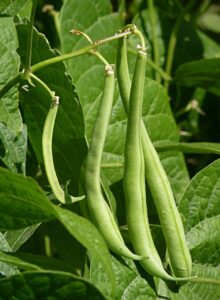 Beans are easy to grow if you’ve got the space and they’re tasty and nutritious. They’re one of the more pricey vegetables to buy in the supermarket. Lots of varieties are unsuitable for mass production, so we miss out on them completely.
Beans are easy to grow if you’ve got the space and they’re tasty and nutritious. They’re one of the more pricey vegetables to buy in the supermarket. Lots of varieties are unsuitable for mass production, so we miss out on them completely.
If you’re growing at home, you can try out different ones and appreciate how much better they taste than those you buy at the supermarket.
The two main forms of French bean are dwarf and climbing. The dwarf is a bush which is easier to grow and so better for beginners. But if you’re up to the task, the climbers will produce a better crop. They both prefer sunny conditions out of the wind. They also like rich soil with lots of well-rotted compost or manure dug into it.
The climbers and the dwarf plants will need structural support, usually in the form of bamboo canes or a trellis. The beans should be harvested when they’re young and tender. You can tell the beans are ready when they’re plump and rubbery (rather than a rough texture) and when you can see the form of the seeds inside through the skin. The more beans you pick during the season, the more beans will grow. With just a couple of plants you should have enough beans for the whole summer.
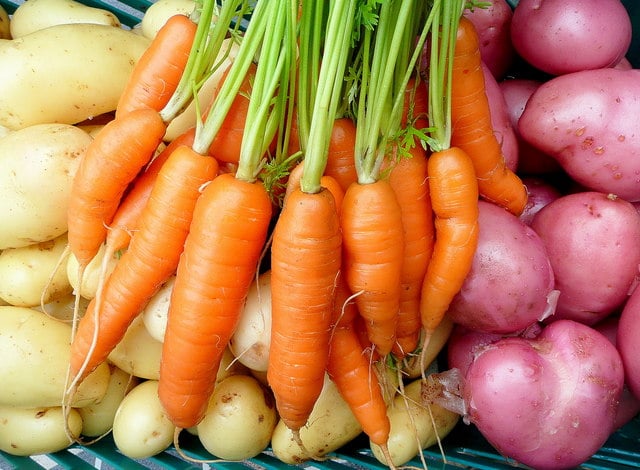 These brightly-coloured treasures seem to almost miraculously appear where you planted seeds just a few months ago.
These brightly-coloured treasures seem to almost miraculously appear where you planted seeds just a few months ago.
Carrots are sneaky. They do their most interesting growing underground. It’s for this reason that they’re great to grow with children, as it’s so exciting to dig up the beds when the carrots have matured and find them all hidden in the soil. The key to growing carrots is good soil preparation. Get rid of those nasty stones and dig in lots of yummy (well, the carrots will think it’s yummy) compost.
Different varieties of carrots prefer different soils. Make sure you’ve prepared the right conditions for the type you’ve chosen. Carrots are also susceptible to pests so plant them along with your onions (that also suffer from pests). Their different scents should confuse the little blighters that prey upon them both.
The early varieties of carrots will be ready in about 12 weeks. The main crop ones take around a month longer. When the carrots are as big as they’re going to get, the leaves will wilt letting you know when to dig them up. However, younger carrots are sweeter and so you can dig them up before this if you like them a bit sweeter.
The great thing about carrots is that they store very well. If you don’t want to eat them as you harvest them, you can store them in a cool dry place until you’re ready.
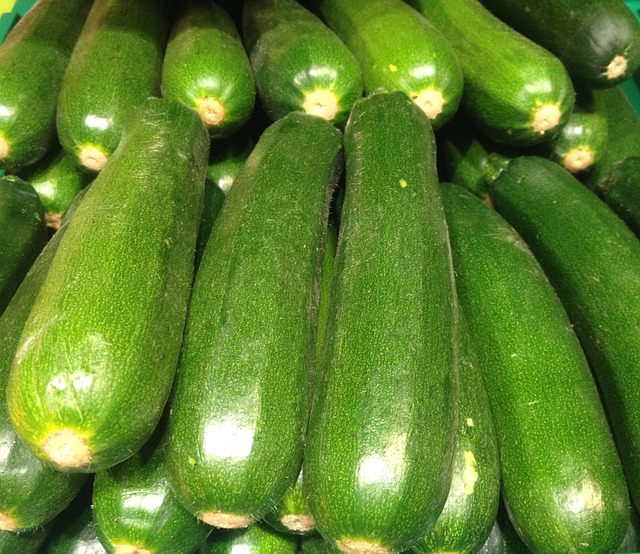 Courgettes come in tons of weird and wonderful shapes and sizes, and so are great to grow with your family. What’s more, they’re one of the easiest plants to grow. Hopefully you won’t be disappointed.
Courgettes come in tons of weird and wonderful shapes and sizes, and so are great to grow with your family. What’s more, they’re one of the easiest plants to grow. Hopefully you won’t be disappointed.
They do take up a lot of space. You need to grow them in a garden where there’s room to stake them, or where there’s a convenient wall or trellis for them to scale.
But they’ll grow equally well in a large pot on your patio. Support them with a tee-pee-like bamboo stakes tied together at the top and secured in the soil. Courgettes are heavy feeders. You’ll need to prepare the soil with fertiliser and top them up once they start flowering. They also get very thirsty – they can drink up to 10 litres of water a week when it’s hot. You’ll need to water them frequently, especially once they begin to form fruits.
You’ve got to watch out once the courgettes start to emerge as they can grow from very small to ready to eat in a matter of days. In fact you should have courgettes on your plate within two months of planting. When the courgettes are about 10cm long you can pick them and eat them. The flower’s edible too, so there’s hardly any waste. Once you pick them, the courgettes will grow back for the whole season. You’ll have plenty to experiment with.
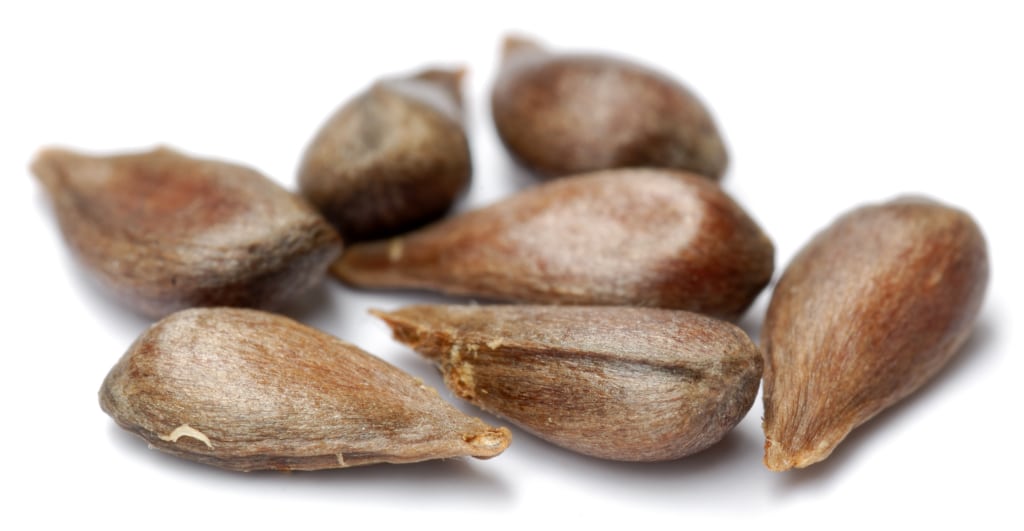 If you’re a beginner, head down to a garden centre to buy your seeds or seedlings. The staff there will help you out with your questions.
If you’re a beginner, head down to a garden centre to buy your seeds or seedlings. The staff there will help you out with your questions.
The main high-street home stores such as Homebase, B&Q and even Tesco have gardening departments that are great for getting seeds, compost, fertilisers and tools. Most of the plants they sell are floral but you can get a good variety of vegetables seeds and some grow-your-own kits if you look around.
Growing your own seedlings can be time consuming and difficult. But you can cheat. Go directly to a garden centre to buy your seedlings.
There are also lots of internet sites that will deliver your plants right to your door if you can’t get to the garden centre. Crocus has a good variety of seeding potatoes and other vegetables available to buy online and there’s a one-off delivery charge of less than £5.00. It isn’t that much considering you could be buying several kilos of supplies.
There’s also a website run from west Cornwall called Rocket Gardens, which specialises in sending you seedlings that are ready to go. You don’t have to do any of the hard work. It has some individual plants for sale, but specialises in whole vegetable or herb gardens. These are delivered to you ready to be popped into pots or into the ground, and then just need to be watered and fed. Although you don’t get to talk to someone face to face, you can call and speak to one of their advisers before you make your choices.
Obviously there are hundreds of other fruits and vegetables that you can grow that we haven’t touched on here.
There’s a great BBC book by Carol Klein called Grow Your Own Veg that’s recommended by the RHS. Get it for £7.94 on Amazon.co.uk.
Have you had much luck growing vegetables? Maybe you now feel inspired to give it a try? Let us know in the comments section below.


Love to try and grow some veggies this year.
Herbal gardening is wonderful since the herbs can be grown in a variety of ways. Plant a container garden for you deck or patio for great colors, different textures and super aromas. Planning an herb garden in the ground will allow you to cultivate a traditional kitchen herb garden outside. Or if you have limited space, become an inside kitchen gardener and plant your herbs on a windowsill or in a window box.
Need to subscribe to this blog, great post. Found it on yahoo.
Hi, I just wanted to say you have a wonderful site and rich content. I bookmarked your site and have it in my reader now…looking forward to more content in the future.
If you want to grow lots of veg but don’t have a garden, go to landshare.net
Its a database that links up landowners and would be growers for free.
Its a great site. If you’re not all that confident to be a grower – you can register as a helper and help someone else in exchange for the produse you help to grow.
Show us a pic, Chrissie, it sounds amazing and I could do with the inspiration. I have a tiny, dark, jungly garden, which is a wildlife heaven (birds, field mice, squirrels and my cat, who so far limits herself to glaring at the squirrels and bringing in the odd field mouse as a gift) but it’s a food growing hell – so I need to plan how to use what little sun I do get. Your tier thingy sounds like it might work, if I can figure where to place it. I’m also inundated with beastly slugs, which destroy so… Read more »